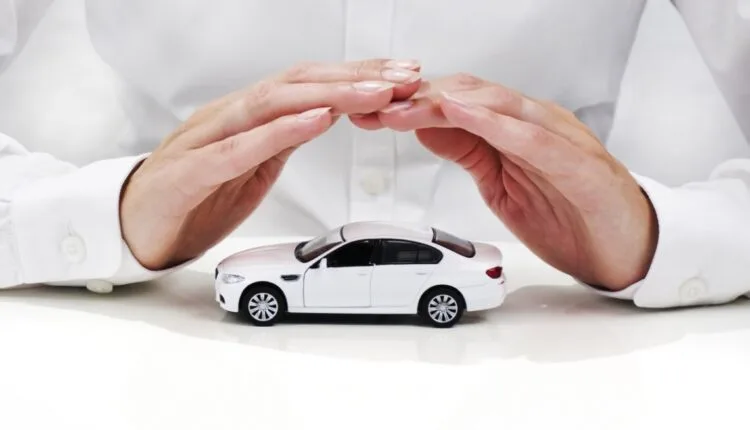In today’s fast-paced world, owning a vehicle has become more of a necessity than a luxury. With the increasing number of cars on the road, auto insurance has become a crucial aspect of responsible vehicle ownership. However, navigating the intricacies of auto insurance can be daunting, leaving many consumers feeling overwhelmed and unsure about their coverage options.
Types of Auto Insurance Coverage
1. Liability Coverage
Liability coverage protects you financially if you’re responsible for injuring someone else or damaging their property in an accident. This coverage typically includes bodily injury liability and property damage liability.
2. Collision Coverage
Collision coverage pays for the damage to your vehicle in the event of a collision with another vehicle or object, regardless of fault.
3. Comprehensive Coverage
Comprehensive coverage provides protection against non-collision incidents such as theft, vandalism, fire, or natural disasters.
4. Uninsured/Underinsured Motorist Coverage
This coverage protects you if you’re involved in an accident with a driver who either has no insurance or insufficient coverage to pay for your damages.
Also check this: Health Insurance
Understanding the Basics of Auto Insurance
Auto insurance is a contract between you and an insurance company that provides financial protection in case of accidents, theft, or other damages to your vehicle. It typically consists of several types of coverage, including:
Liability Coverage
Liability coverage helps pay for damages you cause to others’ property or injuries you cause to others in an accident for which you are legally responsible. It’s divided into two main categories:
- Bodily Injury Liability: Covers medical expenses, lost wages, and legal fees if you injure someone in an accident.
- Property Damage Liability: Pays for repairs or replacement of property that you damage in an accident.
Collision Coverage
Collision coverage helps pay for repairs to your vehicle if it’s damaged in a collision with another vehicle or object, regardless of fault.
Comprehensive Coverage
Comprehensive coverage protects your vehicle from non-collision incidents such as theft, vandalism, natural disasters, or hitting an animal.
Personal Injury Protection (PIP) or Medical Payments Coverage
PIP or Medical Payments Coverage helps cover medical expenses for you and your passengers in case of injuries sustained in an accident, regardless of fault.
Uninsured/Underinsured Motorist Coverage
This coverage protects you if you’re involved in an accident with a driver who doesn’t have insurance or doesn’t have enough insurance to cover your damages.
Factors Affecting Auto Insurance Premiums
Several factors influence the cost of your auto insurance premiums. Understanding these factors can help you find ways to lower your premiums without sacrificing coverage.
1. Driving Record
A clean driving record with no accidents or traffic violations typically results in lower insurance premiums.
2. Vehicle Type
The make and model of your vehicle, as well as its age and safety features, can impact your insurance rates.
3. Location
Your location plays a significant role in determining your insurance premiums. Urban areas with higher rates of accidents and thefts generally have higher premiums.
4. Credit Score
Insurance companies often use credit scores as a factor in determining premiums. Maintaining a good credit score can lead to lower insurance rates.
5. Coverage Limits and Deductibles
Choosing higher coverage limits and lower deductibles will result in higher premiums, while opting for lower coverage limits and higher deductibles can lower your premiums.
Tips for Lowering Auto Insurance Premiums
While auto insurance is essential, there are ways to lower your premiums without compromising on coverage.
1. Bundle Policies
Many insurance companies offer discounts for bundling multiple policies such as auto, home, and life insurance.
2. Drive Safely
Maintaining a clean driving record by avoiding accidents and traffic violations can help you qualify for lower insurance rates.
3. Take Advantage of Discounts
Ask your insurance provider about available discounts such as safe driver discounts, good student discounts, or discounts for installing safety features in your vehicle.
4. Shop Around
Don’t settle for the first insurance quote you receive. Take the time to compare quotes from multiple insurers to find the best coverage at the most competitive price.
5. Review and Adjust Coverage
Regularly review your auto insurance coverage to ensure it meets your current needs. Adjusting your coverage limits and deductibles can help you find the right balance between protection and affordability.
Conclusion
Navigating the world of auto insurance may seem daunting, but understanding the basics and knowing how to save money on premiums can help you make informed decisions and ensure you have the coverage you need without breaking the bank.

